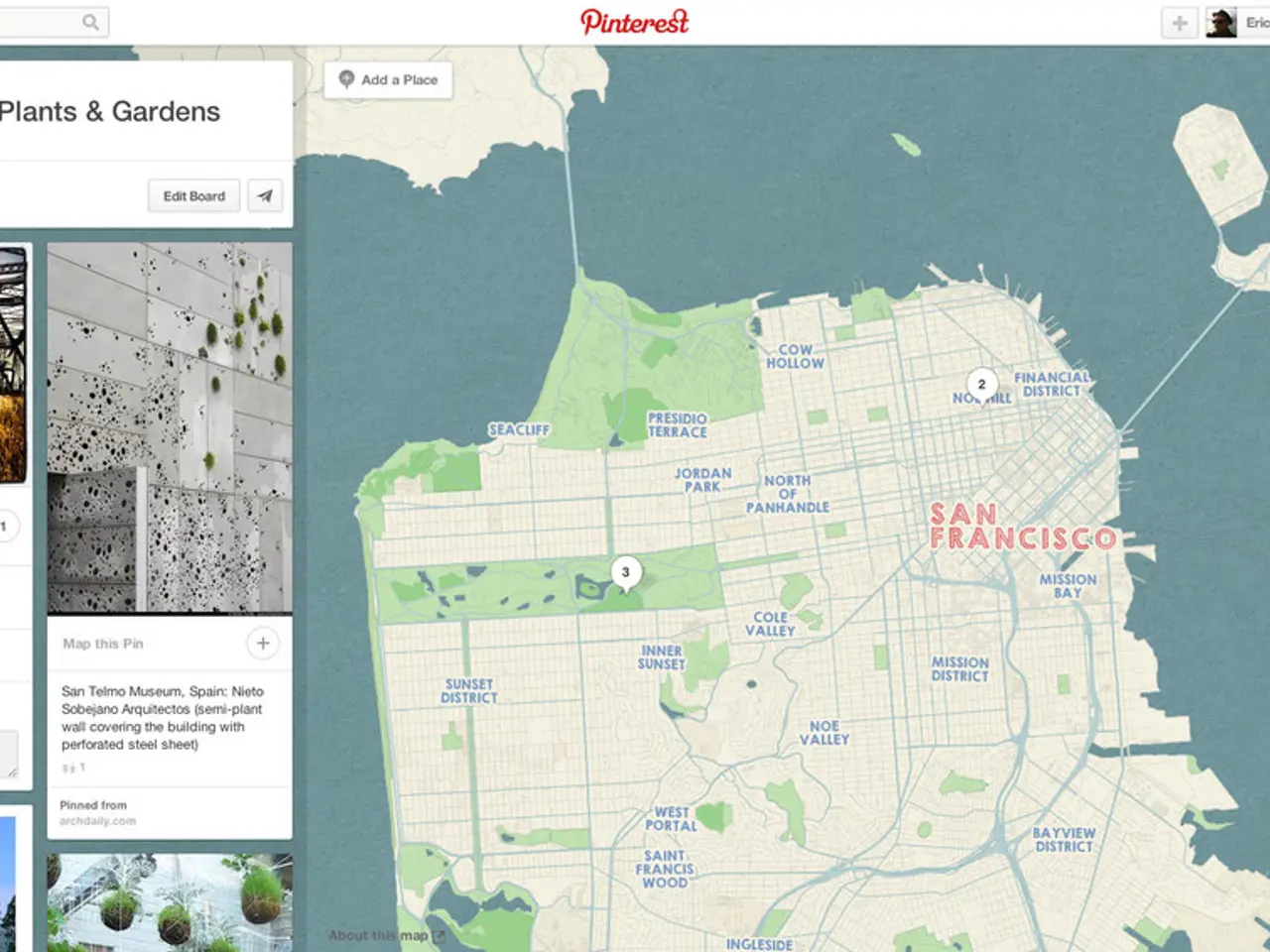Unveiling the Progress of IHO S-100: The Latest Geospatial Standard for Hydrographic Information by the International Hydrographic Organization
The International Hydrographic Organization (IHO) is actively implementing the S-100 geospatial standard as the next-generation hydrographic data framework. This modern standard, designed to supersede the older S-57 standard, offers a more flexible, interoperable, and extensible data model for hydrographic and maritime data.
Key differences between S-100 and S-57 include:
- Data Model and Format: S-100, based on ISO 19100 series geographic information standards, provides a universal hydrographic data model that supports multiple types of marine data products beyond Electronic Navigational Charts (ENCs). In contrast, S-57 is limited to a single product data model specialized for ENCs.
- Flexibility and Extensibility: S-100 is designed as a framework to accommodate a broader range of maritime data types with advanced features for data portrayal and thematic layers, allowing integrated and adaptive displays of information. S-57, on the other hand, has a more rigid structure focused on chart data, limiting future expansions.
- Improved Portrayal and Precision: S-101 datasets (the S-100 compliant ENC product specification) offer improved data quality, precision, and clarity in nautical charting, translating to safer and more efficient maritime operations compared to S-57 charts.
- Global Transition and Implementation: Many hydrographic offices and organizations are transitioning from S-57 to S-100-based standards. Training courses and guidance documents are being offered to facilitate this shift, with draft publications such as the S-57 ENC to S-101 Conversion Guidance being developed and finalized by IHO Member States.
The S-100 registry, hosted by the IHO, will provide a facility to store various registers of hydrographic-related information. Alignment with the ISO 19100 series of geographic standards will require a different structure for S-100 compared to S-57, involving a new framework and new/revised terms to describe the components of S-100.
S-100 aims to address the limitations of S-57 and support a greater variety of hydrographic-related digital data sources, products, and customers. This includes matrix and raster data, 3-D and time-varying data, and new applications that go beyond the scope of traditional hydrography. Hydrographic soundings and images are covered by S-100, including elevation models, regular grid spacing, irregular grids, and various sensor applications.
The framework will consist of the content model, application schema, and encoding model. A new three-dimensional model has been added to S-100 for hydrographic data and images associated with hydrographic data. The metadata component is based on ISO 19115 and ISO 19139 for the XML implementation.
The registry concept offers flexibility, as product feature catalogues can reference an item that will remain valid even if a newer version is registered at a later date. Conformance with the ISO/TC211 standards will maximize the use of commercial-off-the-shelf (COTS) software applications and development.
The GIS industry's Geography Markup Language (GML) has been developed as a standards-based format that provides a good replacement for the outdated ISO standard (ISO/IEC 8211) used by S-57 for encapsulating ENC data. S-100 will enable the use of web-based services for acquiring, processing, analyzing, accessing, and presenting data.
The primary goal for S-100 is to support a greater variety of hydrographic-related digital data sources, products, and customers, including matrix and raster data, 3-D and time-varying data, and new applications that go beyond the scope of traditional hydrography.
The S-100 standard is currently operational and being progressively adopted worldwide. An operational registry is planned for early 2007, with the primary intention being to release S-100 in late 2007. Any future ENC Product Specification will take several years to develop after publication of the S-100 base standard, and will involve the active participation of all IHO stakeholders.
The development, implementation, and transition into force of any improved ENC Product Specification (S-101) must follow the IHO CHRIS governance model for IHO technical standards. IHO is a Class A Liaison Organization to ISO/TC211, ensuring alignment with geospatial standards under development by the International Organisation for Standardisation (ISO).
Sources: 1. The International Hydrographic Review 2. IHO S-100 Information Paper 3. IHO S-100 Conversion Guidance
- The S-100 geospatial standard, a next-generation hydrographic data framework, is based on science and aligns with the ISO 19100 series geographic information standards, expanding the safety of navigation beyond Electronic Navigational Charts (ENCs) to include a variety of marine data products.
- As a more flexible, interoperable, and extensible data model for hydrographic and maritime data, S-100 supports environmental-science applications like climate-change studies, aiding in the collection and analysis of data related to the maritime environment.
- With its improved portrayal and precision, S-100 is beneficial for finance and investing in real-estate, offering valuable data-and-cloud-computing resources and technological innovations that can inform business decisions regarding maritime operations and assets management.
- The S-100 registry, operated by the International Hydrographic Organization (IHO), will provide a facility to store various environmental-science, finance, and business-related information, enhancing the utility of the standard for a broader range of users.
- The adoption and implementation of S-100 will also contribute to the advancement of technology, facilitating the creation of web-based services for acquiring, processing, analyzing, accessing, and presenting hydrographic data, ultimately promoting the growth and efficiency of various industries.




